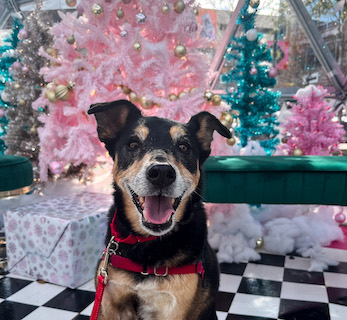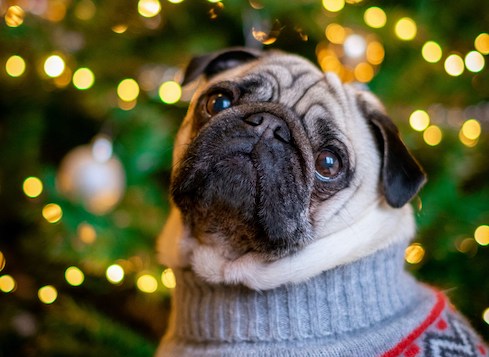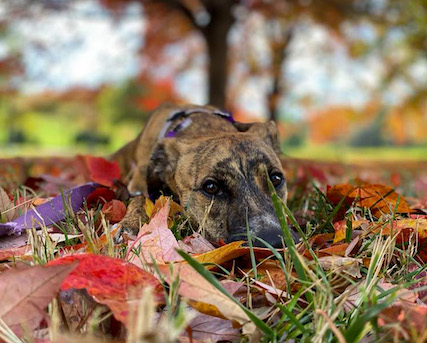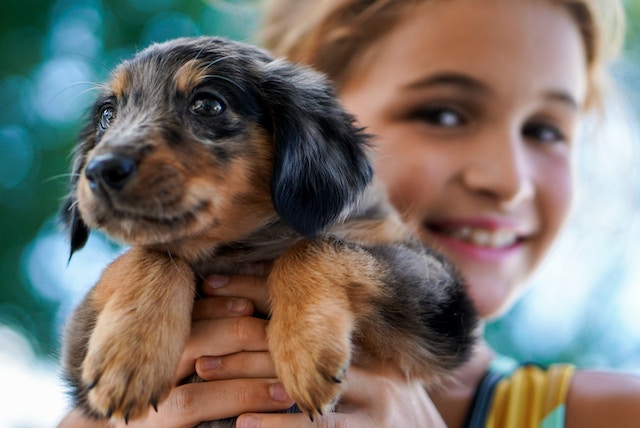Health is a top priority to most pet parents, as it should be! A trip to the vet is usually one of the first things you do after bringing a puppy home. Preparing your puppy for a lifelong happy relationship with their veterinarian is an important aspect of raising your puppy.
Your dog will never understand the importance of going to the doctor. What they will remember is the painful shots, the scary person holding them uncomfortably tight, and the strange smells and noises of a cold office. Pet owners have an opportunity at their first appointment to make sure their puppy has a positive experience with their vet and continues to have a happy relationship with veterinarians and groomers thereafter.
Where do I start?
To prepare for your first grooming or veterinary appointment, start with preventative exercises at home. Your puppy should be handled by you the same way the vet or groomer will handle them.
- Start by sitting and leaning against a wall or couch with a bag of kibble or treats nearby.
- Place your puppy on their back between your legs. Alternatively, if you can’t flip them over, you can practice this with them sitting or standing in front of you.
- Reach for one spot of their body, for example, their front paw. As soon as you reach for their paw, apply pressure and feed one second later. Note: You are building a positive association with the pressure and a treat. Therefore, it is imperative to feed them regardless if they pull away or not. You will feed every time you touch them.
- Start with 3 repetitions on the same spot. If your puppy is relaxed and remains still, you can move on to another spot.
- Make sure to pay particular attention to the mouth, eyes, ears, collar, undercarriage, feet (both front and back), and hindquarters/tail. The same can be done with a brush for long-haired dogs. Keep in mind how a vet or groomer will be handling your pup and try to duplicate those actions.
- If your puppy begins to mouth your hand, squirm around, or avoid the reach, these are signs they may be uncomfortable. You may need to increase how often you are feeding and decrease the intensity of your reach just a little before getting more invasive again.
- If your puppy isn’t eating, try using something even more tasty like chicken, cheese, or deli meat.
- Practice for 5 minutes every day, and always end on a successful trial.
Common Issues
My puppy squirms so much I can’t feed fast enough to keep him still!
Solution: Switch to a paste treat, like peanut butter. Offer licks for a couple of seconds at a time before taking the treat spoon away and then giving it back on the next touch.
I find it difficult to treat and brush at the same time.
Solution: For now, use a second person. One person focuses on treating and the other on brushing. If your puppy is biting the brush or showing aversion to being brushed. Make sure to increase your rate of feeding and keep the brush strokes very light.
My puppy is constantly trying to bite my hand or avoid my reach:
Solution: A little mouthiness is normal, especially if you have a puppy who frequently play bites. However, excessive mouthing and attempts to get your hand away, require more practice. Try to increase your rate of treating or try a paste treat. At the same time, decrease the intensity of your reach. For example, reach and only touch for 1 second instead of touching for 5 seconds. Alternatively, reach and lightly touch the intended area instead of holding a paw or handling the puppy.
Going to the Vet or Groomer
So you’ve just learned how to build a positive association with puppy body handling. Now, let’s apply it in the actual veterinary visit. When you go to the vet, bring lots of tasty treats. Ask the vet if you can treat your puppy as they are handling them. Follow the same guidelines above, treating your puppy when something is particularly hard, like standing still for their ear inspection. Watch for any avoidance or signs the puppy is uncomfortable, such as backing away, whale eyes, or avoiding the vet or technician. In these situations, feed faster! Maybe even bring something high-value that the puppy never gets like chicken or lunch meat. Over time, the puppy will love going to the vet where they get all these tasty treats. You won’t see as much fearful behavior, and when that happens, you can also lessen the number of treats they get.
All that being said, don’t forget to socialize your puppy! They’ll be a lot happier at the vet if they already love meeting new people. Socializing a puppy means for the puppy to make positive associations in new environments with new people, new dogs, new sounds, and new smells. The socialization period is between 3-12 weeks old, sometimes extending to 16 weeks. When you go to these new environments, remember again to bring some kibble or treats to feed your puppy anytime they look nervous. You can also start practicing basic obedience like sit-stay or how to follow a leash. How great would you look if your puppy can already hold a sit stay for the vet as they examine them! We recommend going to 3-5 new places per week and seeing 30-40 new people each week to prepare for the vet or groomer. Find more information on how to safely socialize your puppy in our blog, “Puppy Socialization: What, Why, When, and How“.
Ready to go to the vet? We hope so! Just remember to keep the experience fun with lots of treats and praise. As with all new puppy experiences, take it slow and keep consistent in your training. If you see any escalations in aggressive or fearful behavior, reach out to a licensed trainer as soon as possible. We have a team ready to help!




